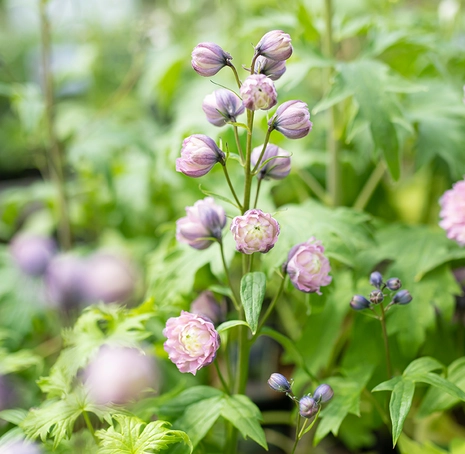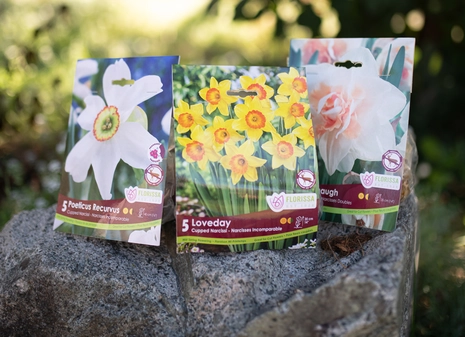Naturalizing Bulbs
The art of naturalizing is providing a plant with a preferred set of conditions, which allows it to thrive in the same spot year after year. This is easy to achieve with certain bulbs. Naturalizing also refers to the random manner in which bulbs grow in the wild, a slightly more challenging task. Below are a few tips on how to best attempt to imitate nature so you can successfully naturalize your bulbs.
Imitating Nature’s Way of Planting
For a convincing drift of daffodils, start with about 50 bulbs, you’ll find almost the same number of cards in a deck. Play a game of “50 pick-up” with the wind and send the cards scattering off, plant a bulb wherever a card lands. Who says planting can’t be fun? Another method is to simply scatter the bulbs themselves, a method suited to small areas. In an attempt to not influence the position of the bulbs, you can even toss them over your shoulder, then turn around and plant them where they land.
Four Simple Steps to Planting Bulbs
It is always important to plant a bulb properly, particularly when you want the bulb to live for many years.
- Prepare a small hole, digging slightly deeper than the required planting depth.
- Take some of the removed soil and mix it with rotted compost or manure. Then fill the hole with the mixture until you reach the required planting depth.
- Before placing the bulb in the hole, add a teaspoon of bone meal for small bulbs or a tablespoon for large ones, then drop the bulb in.
- Fill in the hole, covering the bulb. Water it well and wait for the spring.
Planting Bulbs Under Trees
Though many plants do not grow well under the shade of a tree, it is possible to grow early-flowering bulbs under deciduous trees while the branches are still bare. Good choices include bluebells, daffodils and crocuses. Avoid bulbs such as tulips, anemones, lilies and bearded iris; shade cast from tree leaves during summer prevents growth in these late flowering bulbs. Trees compete strongly for soil moisture and nutrients, so be sure to feed and water your bulbs during their growth period.
Planting Bulbs in Your Lawn
By planting bulbs under your lawn, you can have flowers spilling from their conventional beds into new territory. When choosing bulbs for planting in the lawn, be certain to pick early-blooming varieties. This is to make sure that the bulb’s leaves will die down before you need to mow your lawn. There are two methods of planting bulbs in the lawn depending on the size of the bulbs, how many you want to plant, and how closely.
Small Bulbs (such as crocus, snow drops and scilla) and single large bulbs can be planted in the conventional manner. Dig a hole in your lawn, sprinkle in some bone meal, insert your bulb and cover it back up. The small patch of grass that is uprooted can be stuck back in as a “plug.” Water well and wait for spring.
Clumps of large bulbs (such as daffodils) look wonderful in large lawns, especially when they merge into a woodland or slope. Since large bulbs generally need to be planted deeper and many (depending on the variety) prefer a well-cultivated spot, the sod will have to be lifted.
- Cut a rectangle in the grass with a sharp spade or lawn edging tool.
- Slide the spade under the grass and roll the turf back.
- Dig the soil to a depth of about 30cm (12”).
- Fill the hole with a mixture of the removed soil, a well-rotted compost or manure and a little bone meal.
- Randomly place the bulbs. Cover with the remaining soil mixture making sure to restore it to the original level, then water it well.
- Roll the grass back, water again and wait for the spring show.
Enjoy a colourful lawn again next year by delaying your first mowing by a couple of weeks to ensure that the leaves of the bulbs have died down. Do not apply moss or weed killers to this section of the lawn until the bulbs are absolutely dormant.


